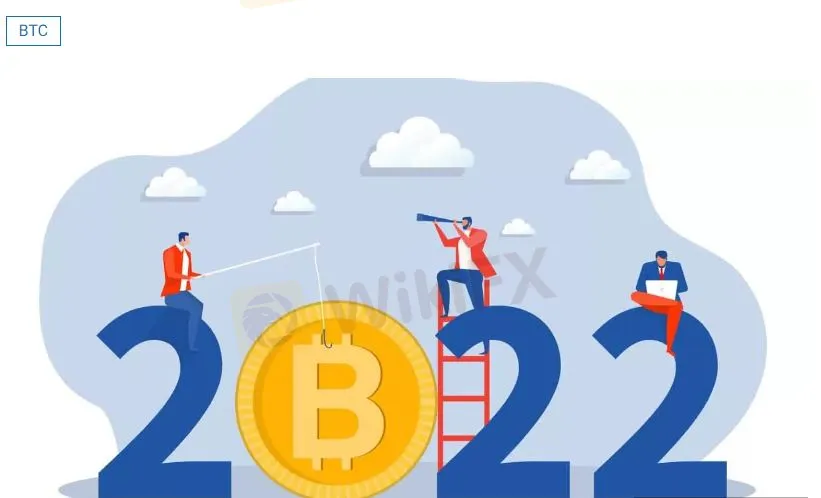简体中文
繁體中文
English
Pусский
日本語
ภาษาไทย
Tiếng Việt
Bahasa Indonesia
Español
हिन्दी
Filippiiniläinen
Français
Deutsch
Português
Türkçe
한국어
العربية
What’s ahead for the Bitcoin price in 2022 amid rising interest rates?
Abstract:Most cryptos are behaving similarly to growth stocks.
The Bitcoin (CRYPTO: BTC) price is up 5% over the past 24 hours.
The worlds first crypto is currently trading for US$41,012 (AU$56,764). That gives it a market cap of US$781 billion, according to data from CoinMarketCap.
The Bitcoin price is now up 2% over the past 7 days, though it remains down 14% year-to-date.
How will the Bitcoin price fare as interest rates rise?
Yesterday (overnight Aussie time) the US Federal Reserve raised its official interest rate by 0.25%. This was the first rate rise from the worlds most watched central bank since 2018.
So, does this mean that the Bitcoin price is likely to continue higher amid a series of expected interest rate increases?
Not so fast.
It‘s not only Bitcoin that’s gained following the US rate hike. Most growth shares leapt higher as well.
The tech-laden Nasdaq, for example closed up 3.8%. And here in Australia technology shares led the charge, with the S&P/ASX All Technology Index (ASX: XTX) up 3.5% in the final minutes of trading.
The risk-on sentiment was spurred not by the rate rise. But by US Fed Chair Jerome Powell‘s bullish outlook for the US economy, the world’s largest.
Joel Kruger, a strategist at crypto exchange LMAX Digital is decidedly bearish on the outlook for the Bitcoin price as rates rise.
“Rates going higher will strangle equity markets. So, if we see a mass exodus out of risk assets, itll weigh on everything… New lows in stocks could contribute to a decline in crypto assets,” he said.
Kruger forecast that if the Fed pursues a hawkish tightening cycle, the Bitcoin price could fall to US$20,000.
With interest rates moving higher in an effort to stem fast rising inflation, Ryan Nauman, market strategist at Zephyr, is doubting that the range bound Bitcoin price can live up to its billing as a potential inflation hedge.
“Investors are still trading it short-term in this range and it can‘t really bust out. It makes me more sceptical of its long-term viability as an inflation hedge and whether it’s a competitor to the US dollar as a reserve currency,” he said.
Wondering where you should invest $1,000 right now?
When investing expert Scott Phillips has a stock tip, it can pay to listen. After all, the flagship Motley Fool Share Advisor newsletter he has run for over ten years has provided thousands of paying members with stock picks that have doubled, tripled or even more.*
Scott just revealed what he believes could be the five best ASX stocks for investors to buy right now. These stocks are trading at near dirt-cheap prices and Scott thinks they could be great buys right now.

Disclaimer:
The views in this article only represent the author's personal views, and do not constitute investment advice on this platform. This platform does not guarantee the accuracy, completeness and timeliness of the information in the article, and will not be liable for any loss caused by the use of or reliance on the information in the article.
Read more

Is the stronger dollar a threat to oil prices?
Oil prices dropped more than 1% on Wednesday, mainly due to the strengthening of the dollar and the increase in U.S. fuel inventories, which collectively suppressed the price rise.

RM5.9M Lost to "Davidson Kempner Capital Management" Facebook Scam
A private contractor in Malaysia faced a devastating loss of over RM5.9 million after falling victim to a fraudulent investment scheme promoted on Facebook. Tempted by the scheme’s impressive claims and credentials, the victim began investing in September 2024. The investment process required him to download an application called A-Trade, which was readily available on the Apple Store.

Is There Still Opportunity as Gold Reaches 4-Week High?
Gold Continues to Rise, can the Bulls Keep Going? Recently, gold prices have been on the rise, especially following the release of the non-farm payrolls data, as demand for gold as a safe-haven asset continues to increase.

This Economic Indicator Sparks Speculation of a Japan Rate Hike!
The latest data shows that Japan’s base wages in November rose by 2.7% year-on-year, marking the largest increase in 32 years, fueling speculation about a potential BOJ rate hike, but Governor Kazuo Ueda’s dovish remarks in December have shifted market expectations toward a potential delay in policy adjustments.
WikiFX Broker
Latest News
High-Potential Investments: Top 10 Stocks to Watch in 2025
US Dollar Insights: Key FX Trends You Need to Know
Why Is Nvidia Making Headlines Everywhere Today?
Discover How Your Trading Personality Shapes Success
FINRA Charges UBS $1.1 Million for a Decade of False Trade Confirmations
Bitcoin in 2025: The Opportunities and Challenges Ahead
BI Apprehends Japanese Scam Leader in Manila
Big News! UK 30-Year Bond Yields Soar to 25-Year High!
SQUARED FINANCIAL: Your Friend or Foe?
Join the Event & Level Up Your Forex Journey
Currency Calculator






